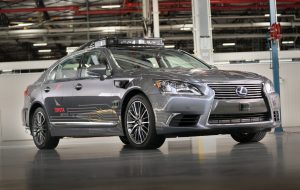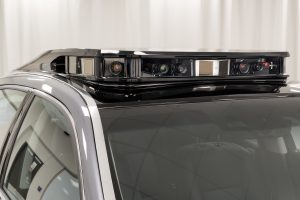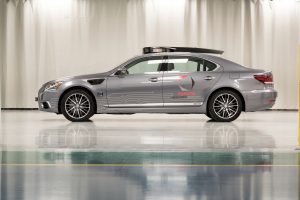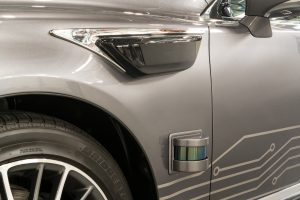Toyota Research Institute to Introduce Next-Generation Automated Driving Research Vehicle at the CES Technology Show
The Toyota Research Institute (TRI) will present Platform 3.0, its next generation automated driving research vehicle, at CES, the global consumer technology showcase, in Las Vegas next week (from 9 January).
The new platform, based on a Lexus LS 600h L, combines greater technological capabilities with harmonised styling that integrates the automated vehicle technology into the LS model’s design.
“Our team have once again rapidly advanced our automated vehicle research capabilities,” said Dr Gill Pratt, TRI CEO and Toyota Motor Corporation Fellow. “To elevate our test platform to a new level, we tapped Toyota’s design and engineering expertise to create an all-new platform that has the potential to be a benchmark in function and style.”
TRI approached the development programme with three core principles: elevate perception capabilities to be an industry pace-setter in automated vehicles; blend the sensing equipment into the vehicle design with a distinct appearance that is sleek and elegant; and package the automated vehicle technology in a manner that is easy to reproduce for building a fleet at scale.
Perception technology
Platform 3.0 represents a maturing of TRI’s automated vehicle research. Experimentation has narrowed in on a technology package with a more defined sensor configuration and a level of performance that helps catapult proficiency in understanding the world around the car.
The vehicle has a sensor-rich package that makes it one of the most perceptive automated driving test cars on the road. On TRI’s earlier test platform, the Luminar LIDAR system, with its 200-metre range, previously only tracked the forward direction; now it covers the full 360-degree perimeter around the car. This is made possible by four high-resolution LIDAR scanning heads which precisely detect objects around the vehicle, including notoriously difficult-to-see dark objects.
Shorter-range LIDAR sensors are positioned low down on all four sides of the vehicle: one in each front quarter panel and one each on the front and rear bumpers. These can detect low-level and smaller objects near the car, such as children or debris in the road. The new platform has the flexibility to incorporate future breakthrough technology as it becomes available.
Design
TRI engaged the expertise of CALTY Design Research and engineers at Toyota Motor North America Research and Development (TMNA R&D) to create compact packaging and conceal the sensors and cameras. They created a new rooftop weather and temperature-proof panel, cleverly making use of the space in the sunroof compartment to minimise overall height. Their ingenuity means the equipment no longer looks like an array of bolt-on parts, and the “spinning bucket” LIDAR sensor that has historically been a characterising feature of autonomous test vehicles has been replaced.
CALTY gave the rooftop panel a confident image, applying styling defined as intelligent minimalism, inspired by crash helmets used for off-road motorcycling. The forward area has a crisp, technical look that becomes more fluid and aerodynamic towards the rear of the vehicle, unifying with the LS’s contour lines. The panel is embellished with chrome trim along the side where it meets the roof line.
“Automotive designers’ roles have been pivoting towards thinking deeper and greater on how to design and apply automated driving technology for drivers and passengers,” said Scott Roller, Senior Lead Designer at CALTY Design Research. “It’s exciting to integrate the components in harmony with the car’s design.”
The computational architecture for operating the automated vehicle components, which previously took up almost all the boot space, has also been consolidated. The electronics infrastructure and wiring have been condensed into a small box, smartly adorned with an LED-lit TRI logo.
Production
Production of Platform 3.0 vehicles will begin in the spring. The Prototype Development Center at TMNA R&D headquarters in York, Michigan, which has expertise in low-volume, specialised production, will build the cars from stock Lexus LS models.
Production numbers are intentionally low to allow for continued flexibility, given the speed at which TRI has progressed in updating its test platform. There have been three major updates, including two new generation test models, in less than a year. TRI anticipates rapid developments will continue.
Some of the vehicles will be assembled with the dual cockpit control layout that TRI revealed last summer. This arrangement is used to test TRI’s Guardian approach to automated driving, experimenting with methods for transferring vehicle control between the human test driver and the automated system while having a safety driver in place as a back-up. Single cockpit vehicles, like the one on display at CES, are used to test Chauffeur, which is TRI’s approach to full vehicle automation.
Both Guardian and Chauffeur test vehicles use the same technology stack of sensors and cameras, and similar software.








